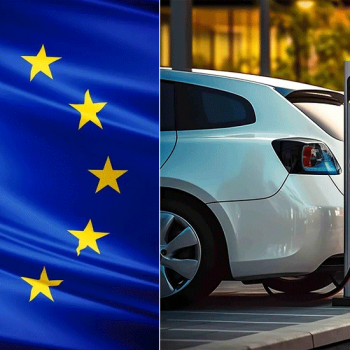Building a Sustainable Future: Developing Green Skills in Nepal

Much of the discourse among those well-informed about present society revolves around the need to save the environment, and there has been a consequent shift in behavior. As such, a significant number of people are doing the needful to address climate change in their daily lives.
Cycling is one of many solutions that conservationists have adopted. Riding a bicycle is easy, inexpensive, as well as environmentally friendly, and cycling as a mode of transportation can also bridge the gap between the rich and the poor.
In 2021, the Intergovernmental Panel on Climate Change recognized bicycling as a solution to creating a sustainable world for present and future generations.
Still, in cities like Kathmandu, the majority of commuters use fuel-powered two or four-wheelers, and the use of bicycles is limited to those who ride it as a hobby or those who cannot afford other private modes of transportation. More recently, that number has extended to those who wish to reduce their carbon footprint as well as their impact on the city’s traffic.
But another reason why cycling is not prioritized as a commute option is because the roads are not bicycle-friendly and often hazardous for cyclists.
The Lalitpur Metropolitan City inaugurated a 4.7km cycle lane on November 20, 2019, as part of its attempt to make the city eco-friendly. To set an example, the mayor of Lalitpur rode to work on his thirty-year-old bicycle (Ojha, 2019). In addition, the local government has been working to promulgate the New Cycle Law 2020 to make the metropolis safe for cyclists.
If we are able to make the city bicycle-friendly, we can contribute towards economic growth (Luitel, 2018), save resources as much as possible, and ultimately contribute to saving the planet.
Former US Marine and famous legal historian Michael Ehline in his Ehline Personal Injury Attorney Law Blog describes how cycling contributes to stimulating the economy and saving the planet. A person can reduce 67% of carbon emissions on average every day just by opting for bicycles over gas—powered vehicles, writes Michael Ehline on the blog.
Mr. Ehline also discusses how regular biking as a physical activity can help expend calories and help regulate one’s weight to reduce obesity, becoming a path towards an active lifestyle and better health. Indeed, bicycle messengers, who deliver time-sensitive items such as newspapers, are known for their physical endurance as well as their ability to navigate congested urban streets.
By virtue of being a physical activity, cycling can ultimately reduce the demand for medical interventions and procedures. That being the case, people will have a lesser need for funds to cover costly medical claims, which can lead to a potential decline in health insurance premiums.
Mr. Ehline further states that dining out might reduce the burning of fossil fuels that contribute to climate change as it reduces the use of individual gas-powered cooking and dining apparatus.
During my visit to Kuala Lumpur, I had a similar outside dining experience to Michael Ehline’s blog post about eating out. The food in Kuala Lumpur is very low-cost and hygienic in family restaurants. If cities like Kathmandu adopt similar trends of taking meals in a communal space, that would contribute not only to reducing the carbon emissions of each family but redirect time reserved for cooking towards other productive activities while uplifting small businesses and entrepreneurs at the same time.
In his article titled To fight climate change, we need to start biking like the Dutch, published in The Verge, science reporter Justine Calma posits that we could reduce a significant amount of the pollution that warms the earth if more people worldwide were as enthusiastic cyclists as those in the Netherlands. The Dutch cycle an average of 2.6 kilometers (1.62 miles) every day, more than any other nation’s population.
Currently, transportation accounts for 25% of all fuel-related greenhouse gas emissions worldwide (Calma 2022), with passenger cars accounting for 50% of those emissions.
Tristan McCowan in his peer-reviewed article Internationalization and Climate Impacts of Higher Education: Towards an Analytical Framework, published in Sage Journals, writes that maximum uses of fossil fuel, and greenhouse gas emissions are major concerns and causes for advocacy among climate intellects.
The global reach of the universities due to the internationalization of higher education that has facilitated the movement of students and staff has direct as well as indirect implications in terms of greenhouse emissions (McCowan, 2023), and the increased mobility is accountable for climate change and other environmental hazards of this era, McCowan additionally writes.
But although the author explains how global mobility has contributed to greenhouse gas emissions, he also presents contradictory ideas about how climate action and advocacy needs international collaboration. These contradictions will be challenging to address and teach at academic institutions.
Increasing the use of bicycles, frequent outdoor dining, and reduced global mobility of students could significantly reduce greenhouse gas emissions and consumption of fossil fuels while promoting the growth of green skills that would ultimately enhance the economy of a country like Nepal.
The writer, Jeni Shrestha, is an MPhil scholar in Development Studies at Kathmandu University, School of Education.















